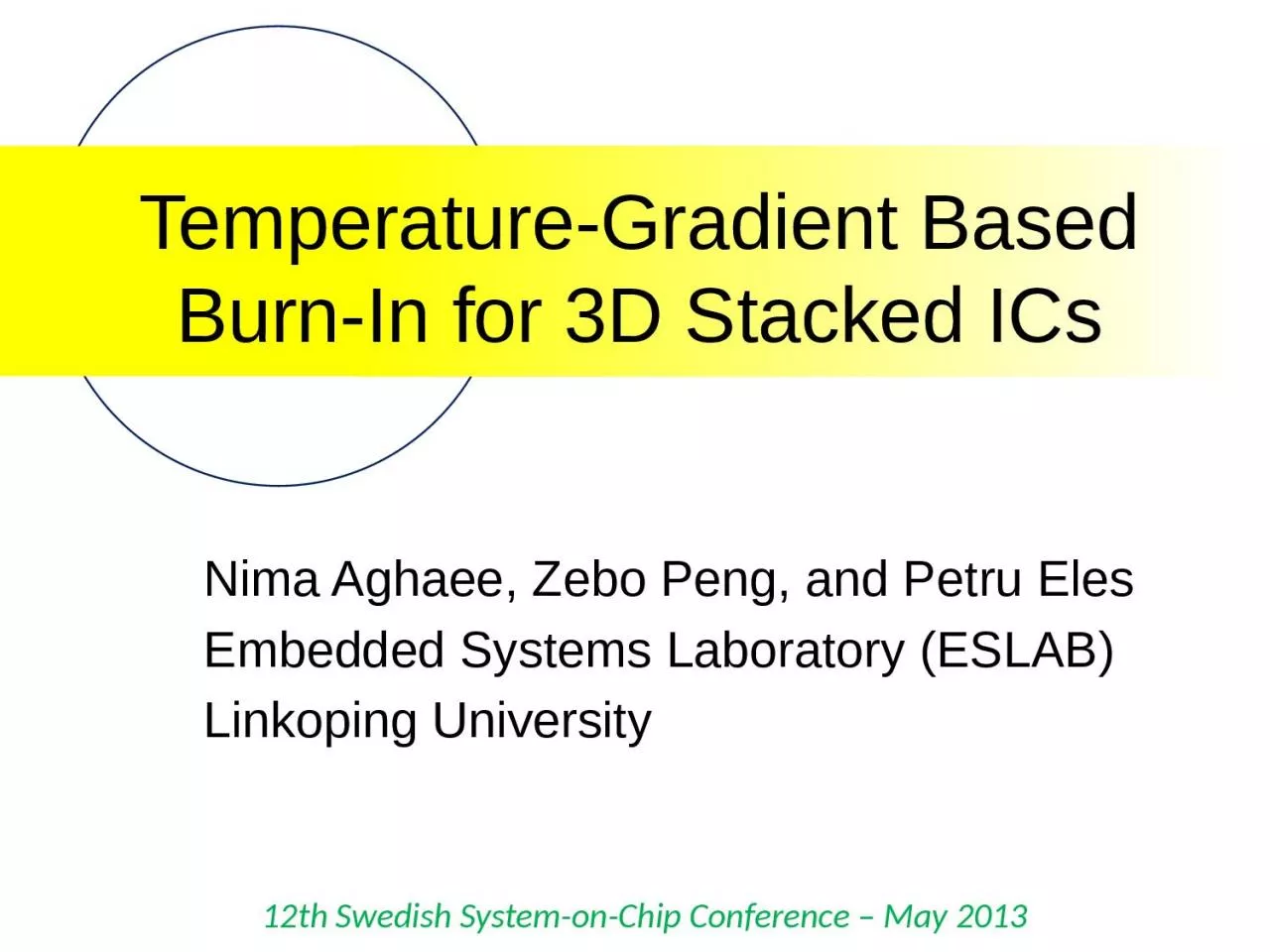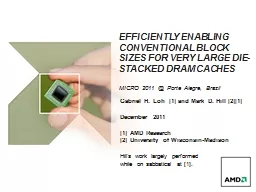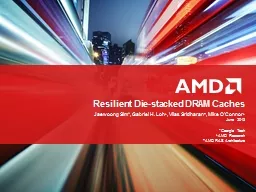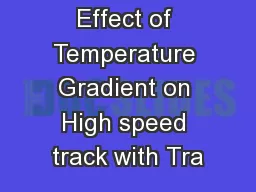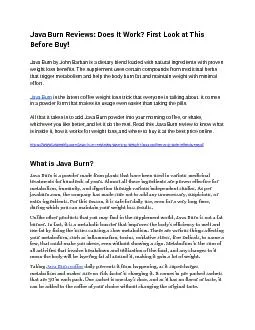PPT-Temperature-Gradient Based Burn-In for 3D Stacked ICs
Author : hoodrona | Published Date : 2020-08-28
Nima Aghaee Zebo Peng and Petru Eles Embedded Systems Laboratory ESLAB Linkoping University 12th Swedish SystemonChip Conference May 2013 Outline Introduction Early
Presentation Embed Code
Download Presentation
Download Presentation The PPT/PDF document "Temperature-Gradient Based Burn-In for 3..." is the property of its rightful owner. Permission is granted to download and print the materials on this website for personal, non-commercial use only, and to display it on your personal computer provided you do not modify the materials and that you retain all copyright notices contained in the materials. By downloading content from our website, you accept the terms of this agreement.
Temperature-Gradient Based Burn-In for 3D Stacked ICs: Transcript
Download Rules Of Document
"Temperature-Gradient Based Burn-In for 3D Stacked ICs"The content belongs to its owner. You may download and print it for personal use, without modification, and keep all copyright notices. By downloading, you agree to these terms.
Related Documents

